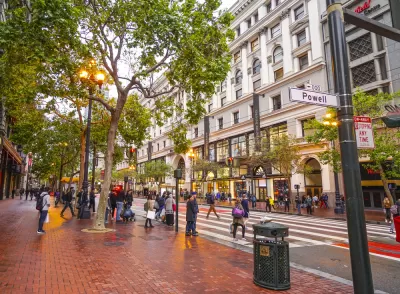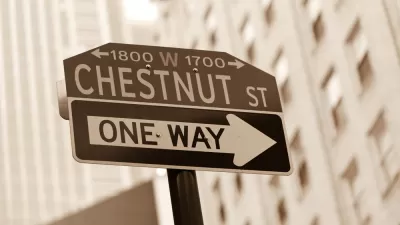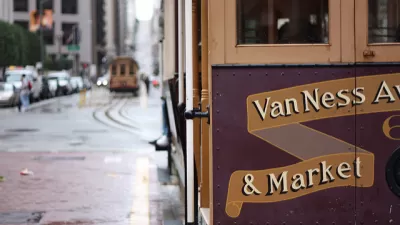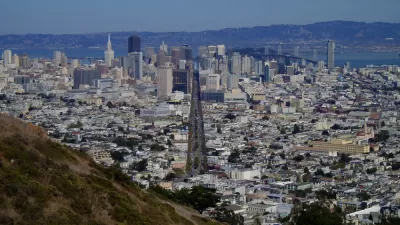Multiple studies have quantified the early results from a project in San Francisco that blocked most private automobile traffic from Market Street in the city's downtown.

Regina Clelow shares news of a new study into the effects of Better Market Street in San Francisco, reporting large increases of the number of people riding scooters on the newly car-free Market Street:
The average daily scooter ridership the weeks of February 2–29, 2020 increased by 30 percent from the prior three weeks of January 5–25, 2020 before car-free Market.
Clelow puts the scooter ridership data in context of the vast, proven potential of micromobility and street changes to improve the safety and sustainability of city streets.
Another study, reported by Rachel Swan in February, found evidence of small increases in congestion on roads proximate to Market Street, proving incorrect predictions of gridlock (and not for the first time) as a result of removing cars from a major thoroughfare:
Congestion increased only marginally on nearby roads, according to new data from the traffic analytics firm Inrix. It shows that the biggest slowdown occurred on Mission Street, where southbound vehicle speeds decreased by 4% — from 10.3 miles per hour to 9.9 miles per hour — during the 8 a.m. commute. On other adjacent streets, car speeds declined by an average of 1%.
And for one final angle on the modes benefiting from Better Market Street, the Inrix report also found evidence of improved transit travel times along the corridor:
On the flip side, transit riders on Market Street benefited significantly from the removal of cars. Muni lines are running 6% faster on average, said Erica Kato, an agency spokeswoman. Some bus lines shaved 12% travel time, which means rides are two minutes shorter.
FULL STORY: San Francisco’s “Car-Free” Market Street Boosts Bike (and Scooter) Ridership

Planetizen Federal Action Tracker
A weekly monitor of how Trump’s orders and actions are impacting planners and planning in America.

Congressman Proposes Bill to Rename DC Metro “Trump Train”
The Make Autorail Great Again Act would withhold federal funding to the system until the Washington Metropolitan Area Transit Authority (WMATA), rebrands as the Washington Metropolitan Authority for Greater Access (WMAGA).

The Simple Legislative Tool Transforming Vacant Downtowns
In California, Michigan and Georgia, an easy win is bringing dollars — and delight — back to city centers.

The States Losing Rural Delivery Rooms at an Alarming Pace
In some states, as few as 9% of rural hospitals still deliver babies. As a result, rising pre-term births, no adequate pre-term care and "harrowing" close calls are a growing reality.

The Small South Asian Republic Going all in on EVs
Thanks to one simple policy change less than five years ago, 65% of new cars in this Himalayan country are now electric.

DC Backpedals on Bike Lane Protection, Swaps Barriers for Paint
Citing aesthetic concerns, the city is removing the concrete barriers and flexposts that once separated Arizona Avenue cyclists from motor vehicles.
Urban Design for Planners 1: Software Tools
This six-course series explores essential urban design concepts using open source software and equips planners with the tools they need to participate fully in the urban design process.
Planning for Universal Design
Learn the tools for implementing Universal Design in planning regulations.
Smith Gee Studio
City of Charlotte
City of Camden Redevelopment Agency
City of Astoria
Transportation Research & Education Center (TREC) at Portland State University
US High Speed Rail Association
City of Camden Redevelopment Agency
Municipality of Princeton (NJ)





























